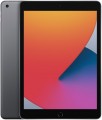CPU
The model name of the processor installed in the tablet.
The processor is the “heart” of the device. It is he who is responsible for performing all the computing operations necessary for the normal operation of the tablet, and largely determines the overall performance. Knowing the name of a specific processor model, you can easily find detailed information on it, incl. and comparison with other models.
The most popular chips these days are from
Qualcomm(in particular, the top solutions
Snapdragon 800 series and
Snapdragon 8 series),
MediaTek(budget and “mid-range”
MediaTek Helio processors and the line of advanced
MediaTek Dimensity chipsets with 5G support), and among Windows tablets
Intel processors (mainly the
Intel Core family) are often found. Quite a rarity are branded
Kirin processors from Huawei and Honor.
CPU speed
The clock speed of the processor installed in the tablet is actually the maximum number of operations performed by one processor core per second. This indicator is important for the speed of the system, but a high clock frequency in itself does not guarantee speed. The actual speed of the processor also depends on its architecture, the number of cores and many other features, and the overall speed of the device also depends on the amount of “RAM”, the installed OS, etc. Therefore, situations are not uncommon when
powerful advanced tablets have a lower CPU frequency than more modest models.
CPU cores
The number of individual cores provided by the tablet processor.
The core is the part of the processor that executes a single instruction stream. Accordingly, the more cores, the more threads the processor can simultaneously process and the higher its performance (ceteris paribus). On the other hand, numerous cores is not always an indicator of a high class processor and tablet as a whole. First, the actual performance of the chip depends on many other factors, and advanced dual-core processors often outperform inexpensive quad-core processors. Secondly, the development and cheapening of technologies has led to the fact that simple
quad-core CPUs have become quite affordable even for low-cost devices. And even
eight-core processors, which at one time were an unequivocal sign of advanced models, are increasingly found in relatively inexpensive tablets; the same can be said about relatively recent
processors with 10 cores. However it is worth noting that in such chips, the cores can be divided into main (with high performance) and additional (used in tasks that do not require power). For example, 8 cores can be divided into 4 main and 4 additional cores. However, such a division is often not a disadvantage, but an advantage: numerous full-fledged cores is rarely required in fact, and reduced power saves energy and improves battery life.
Graphics card
Model of the graphics card installed in the tablet. The graphics card in such devices is not a separate device, but part of the processor; however, she still has a clear specialization and is responsible for graphics.
Accordingly, the graphics capabilities of the tablet directly depend on the characteristics of the video accelerator. Theoretically, knowing the name, you can find detailed specifications of a graphics card, reviews, test results and other information and evaluate how it suits you. At the same time, in most cases there is no need to delve into such details — all system components, including the graphics card, are usually selected in such a way as to correspond to the general class of the tablet and the capabilities necessary for this class.
AnTuTu Benchmark
The result shown by a device when undergoing a performance test (benchmark) in the AnTuTu Benchmark.
AnTuTu Benchmark is a comprehensive test designed specifically for mobile devices, primarily smartphones and tablets. It evaluates the performance of the processor, memory, graphics, and input/output systems, providing a clear impression of the system's capabilities. The better the performance, the higher the score. According to AnTuTu, top models are those that score more than 700K points.
As with any benchmark, this test does not provide absolute precision; for more details on measurement inaccuracies, see the "3DMark Gamer's Benchmark" section.

